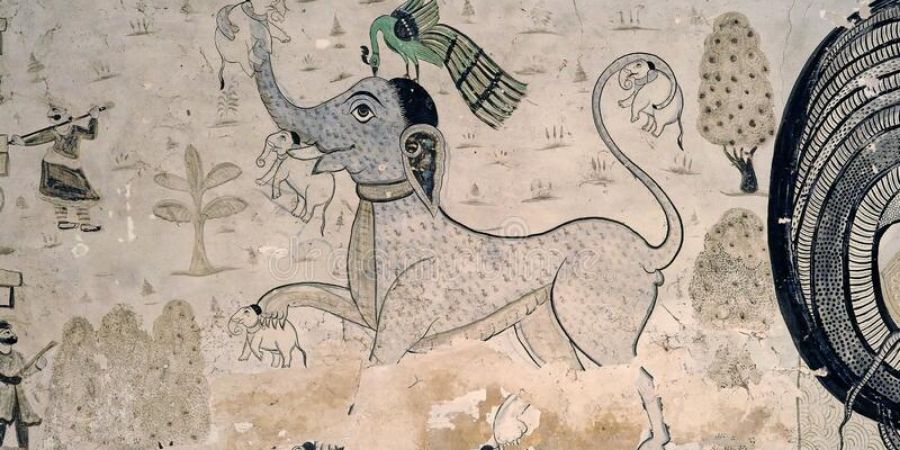

Yali, also known as Vyala in Hindu mythology, is described as having an elephant's trunk and tusks, a lion's head and body, and occasionally horse characteristics.
Yalis, also known as vyalas, are mythical composite animals that have been sculpted on South Asian temple pillars and pilasters. They can be seen in late-medieval and early-modern temples in southern India. A yali is generally depicted as having a lion's body and the head of another animal, such as an elephant's (when referred to as gaja yalis), a human's (when referred to as nara yalis), or a dog's (when referred to as svana yalis). When a monster possesses a tiger's body, it is known as a shardula. Hooves and horns could be added as well. The Tamil and Sanskrit words for "fierce monster" are merged to get the word "yali."
According to folklore, the yali acts as a protector, both physically and spiritually. It is seen as a brave animal that rules the animal realm. It is also thought to be a metaphor for man's struggle with nature's basic forces.
Yazhis and their numerous manifestations:
Although Yazhis (the original animal from which they evolved) come in a range of shapes and sizes, three are especially common.Simma, the Lion Yazhi, Makara, the Capricorn (as shown in the image above), and Yannai, the Elephant Yazhi, are the next to appear. Although some publications mention horse-headed, human-headed, or dog-headed yazhis in temples, I've never seen any of them.
In addition, I discovered sculptures that indicate the intimate ties between ancient south Indian kingdoms and those of Cambodia and other modern-day south-east Asian nations. In fact, the two yazhi statues in the above photos are very similar to lion/dragon statues I saw in Bangkok. Keep in mind that, despite sharing the same historical period, architectural style, and temple, they are very different artistically. This could be an example of the trickle-down movement, which promotes fusion aesthetic and design.
Many cave and structural temples in India contain Yali figures, including the Tiger Cave at Saluvankuppam, the Airavateshvara temple at Dasarum, the Minakshi-Sundareshvara temple in Madurai, the Virupaksha temple in Hampi, Karnataka, the Kailasanatha Temple at Ellora, and the Sun Temple in Konark.
The surul-yali is a gentler variant of the yali, commonly represented flanking small steps attached to temple plinths, with waterfalls emerging from their open mouth. Yalis were venerated as divine depictions of gods and were incorporated into architecture and sculpture to symbolise bravery and nature's tamed and controlled energies.
